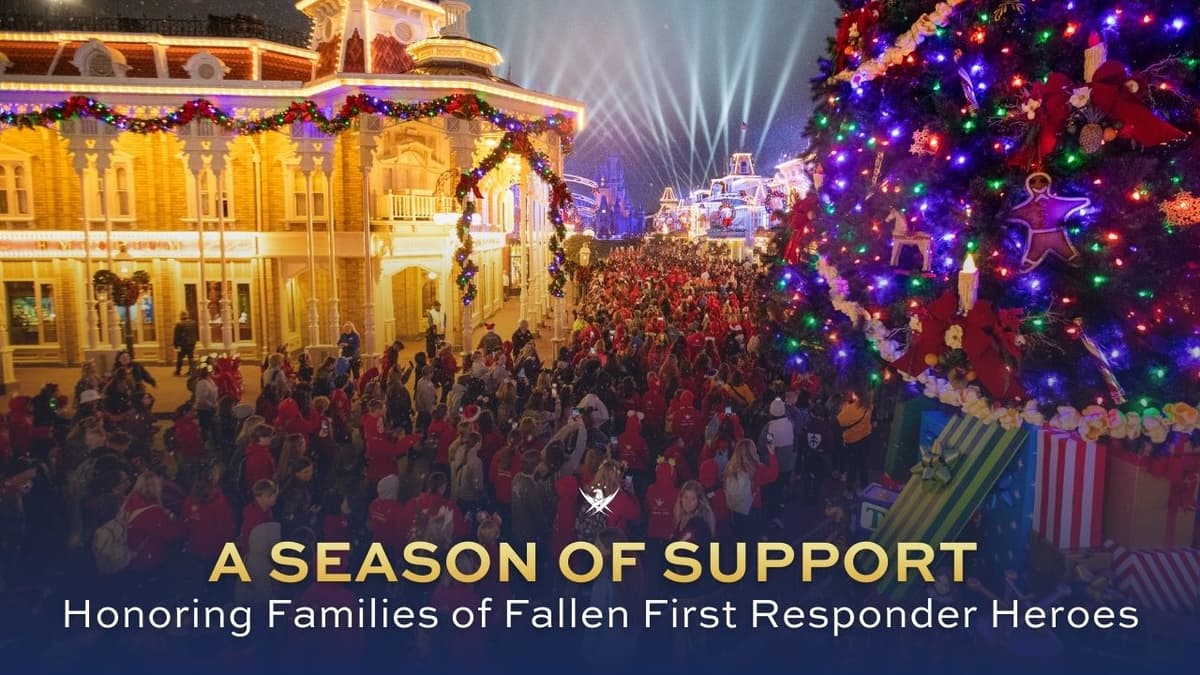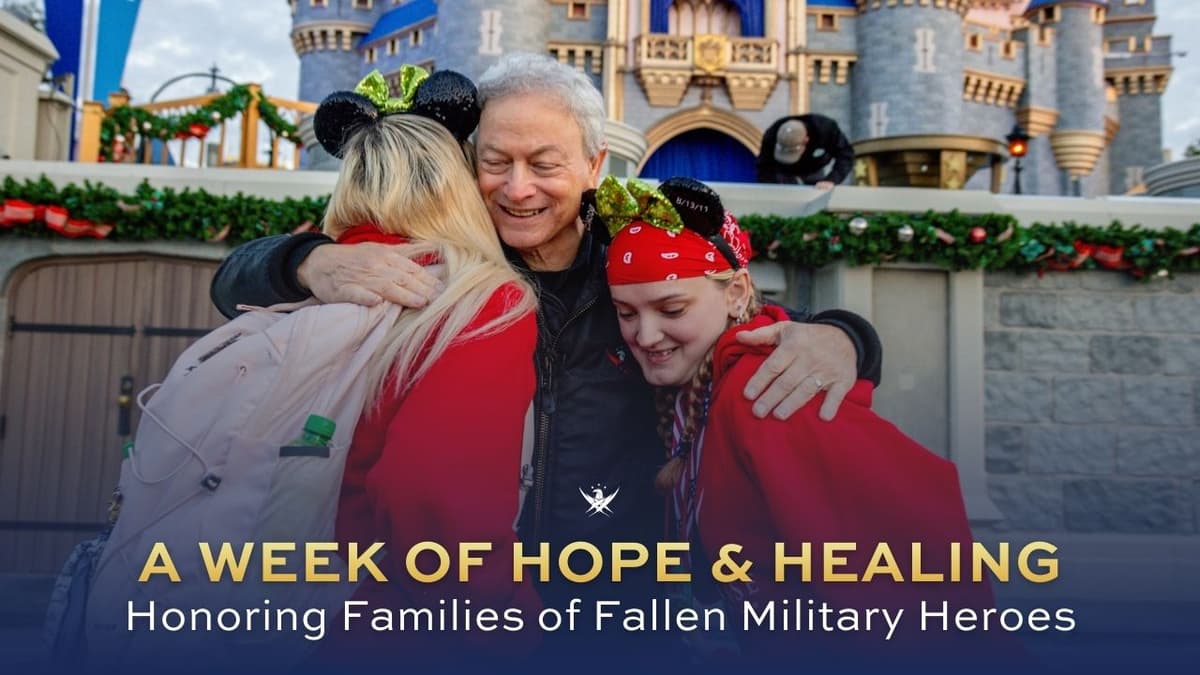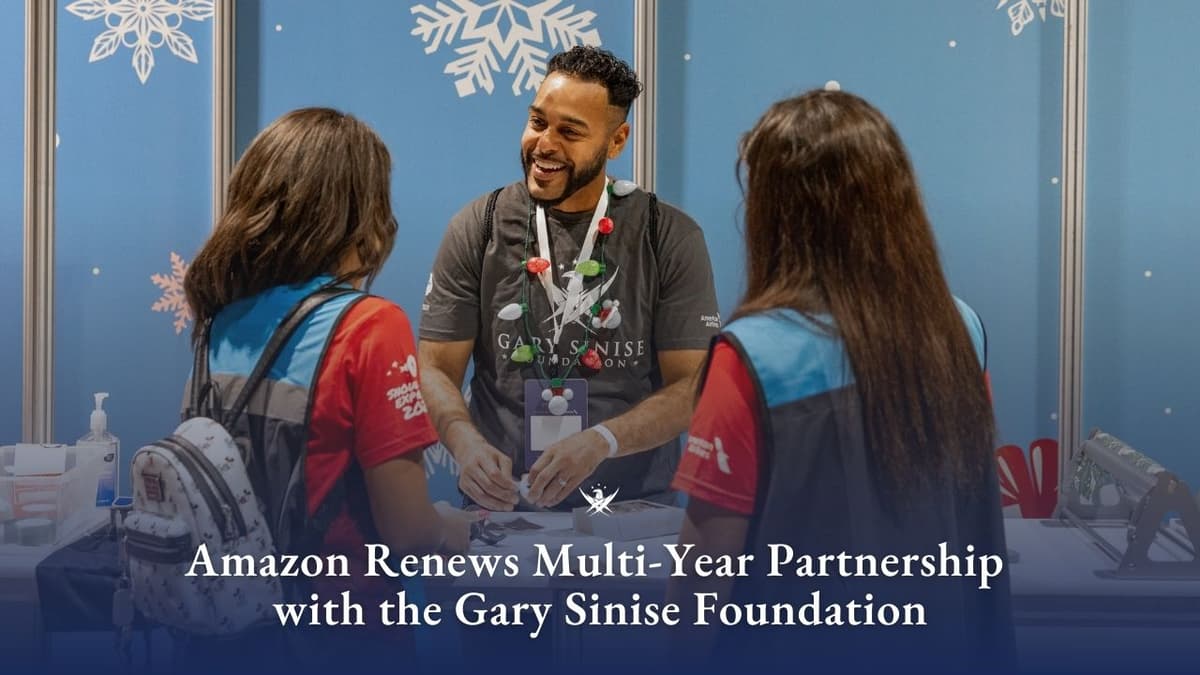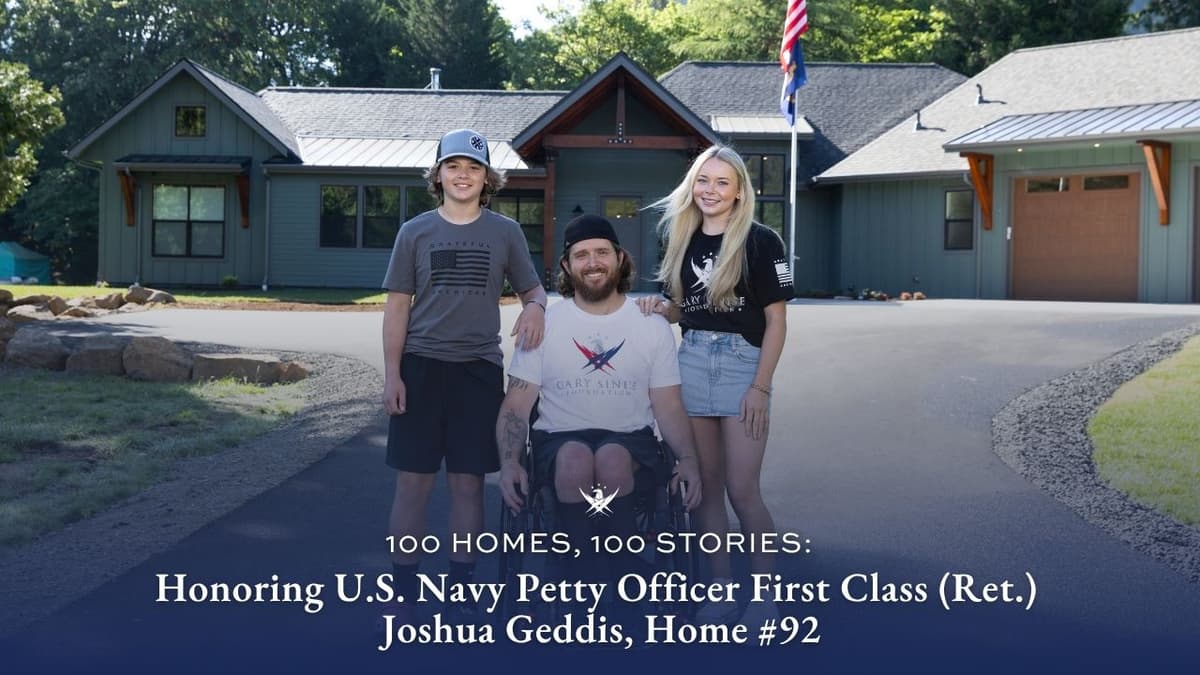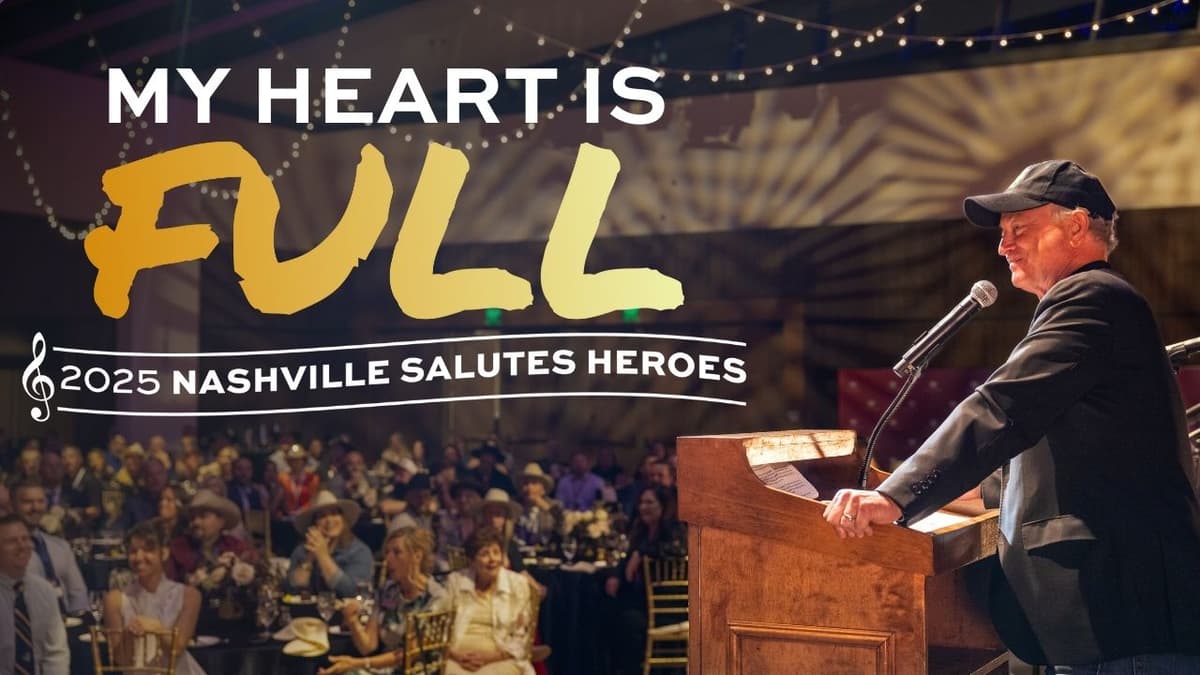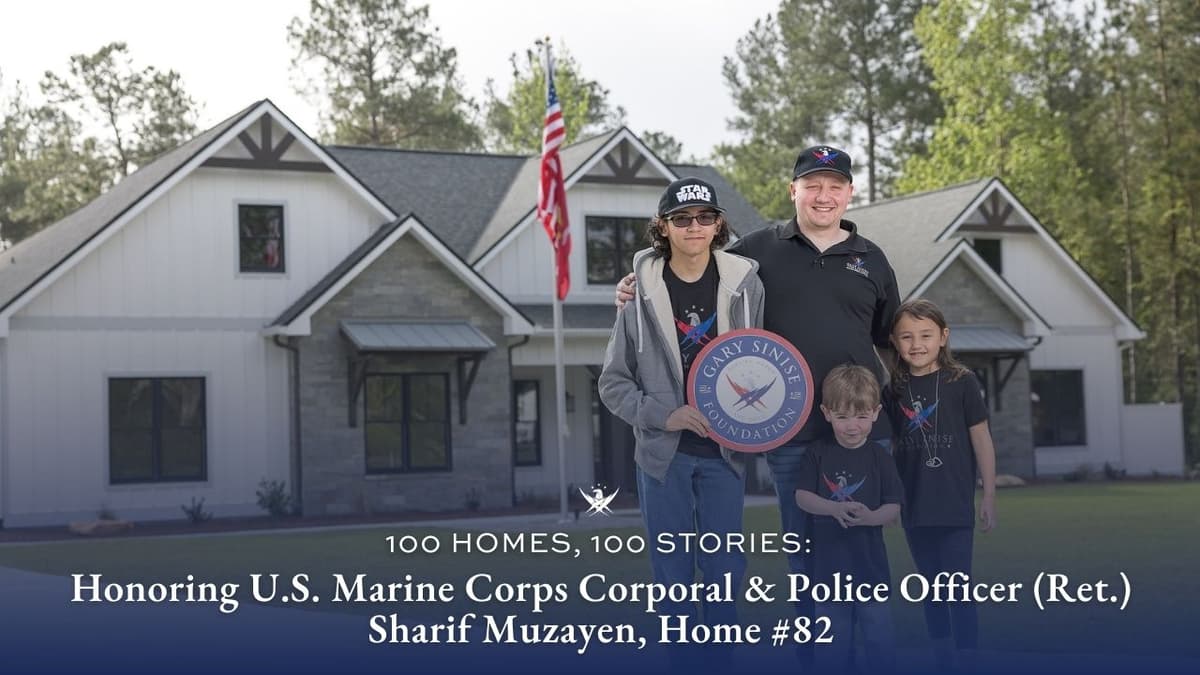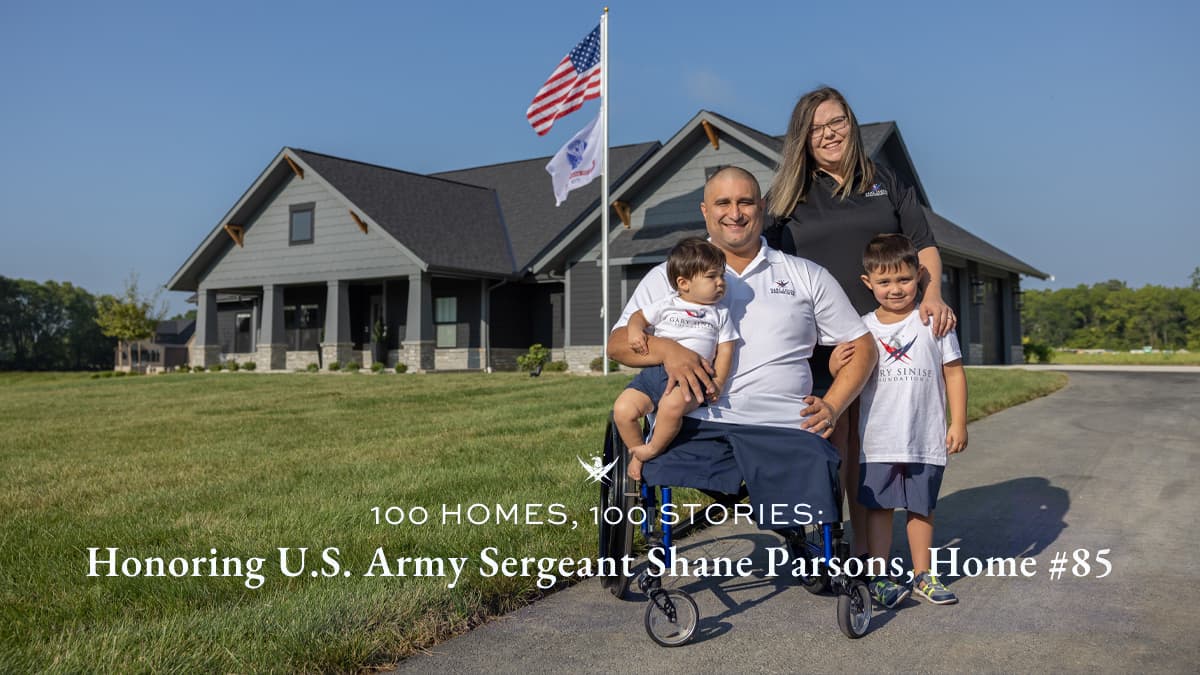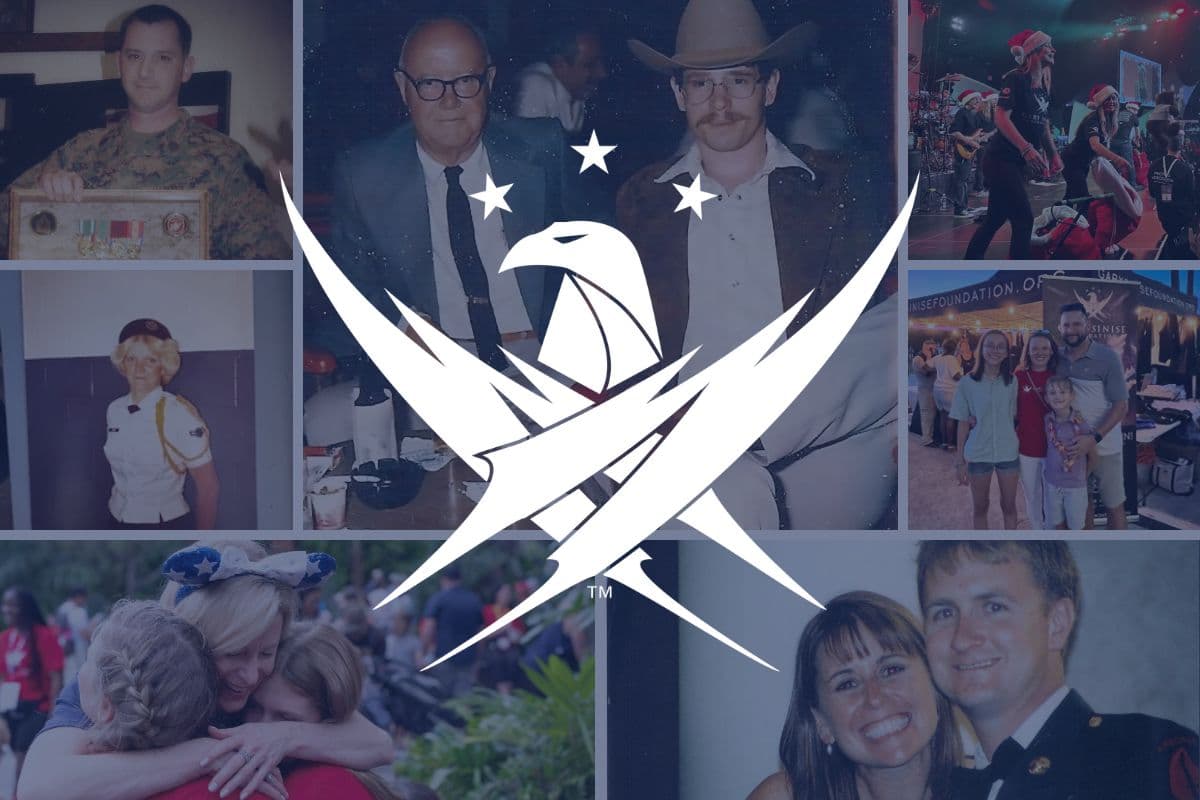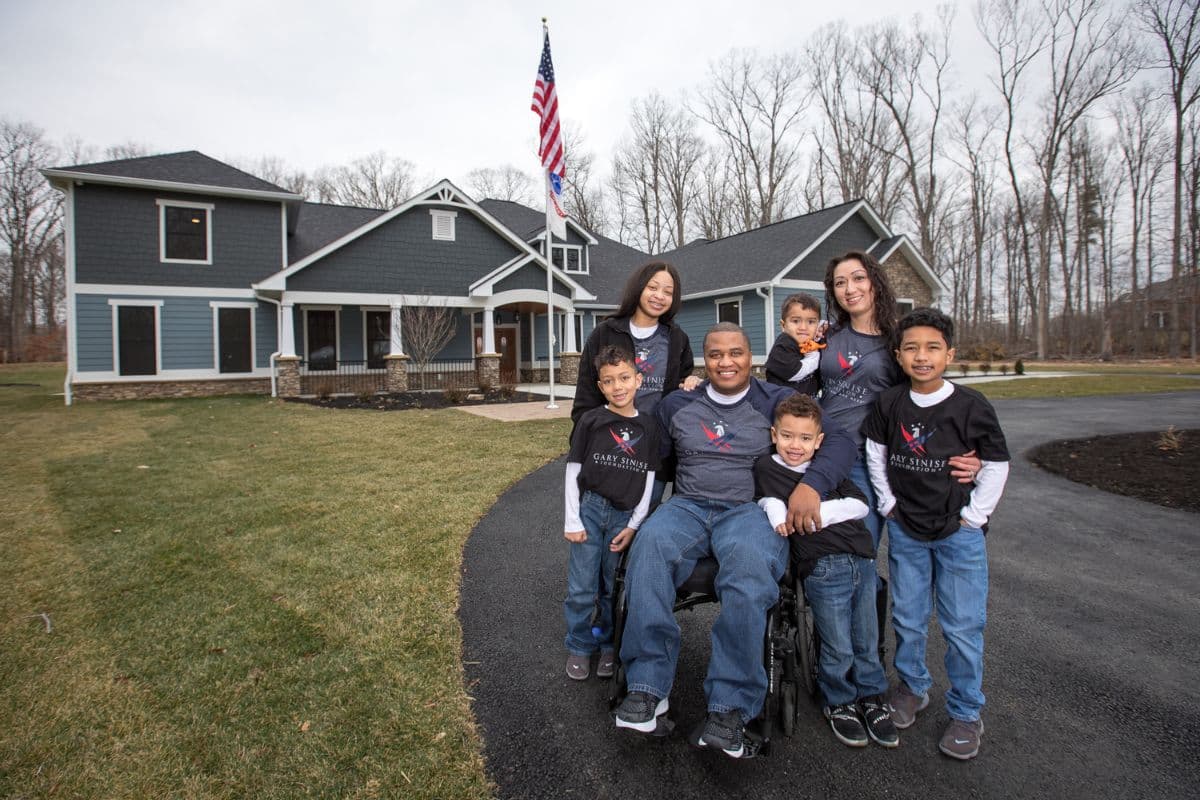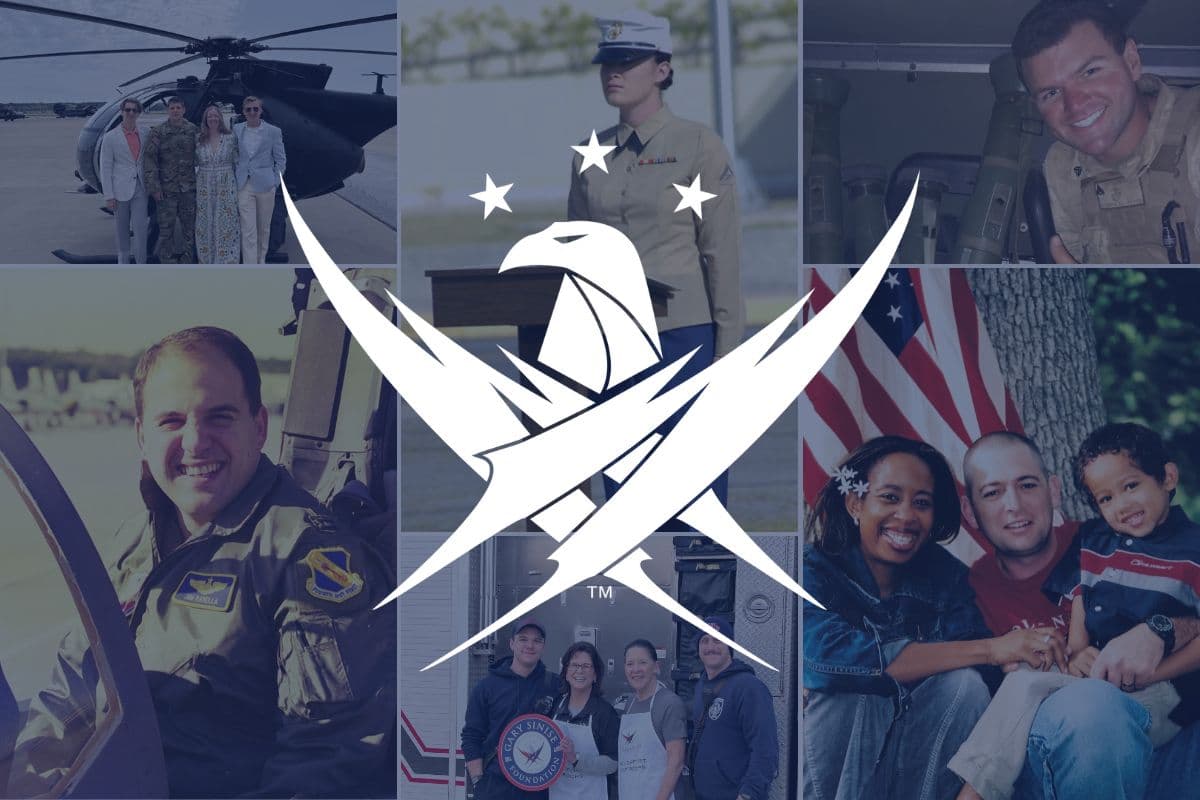From The Greatest Generation To Gen Z, Veterans of WWII Impart Their Legacy on High School Students During Soaring Valor
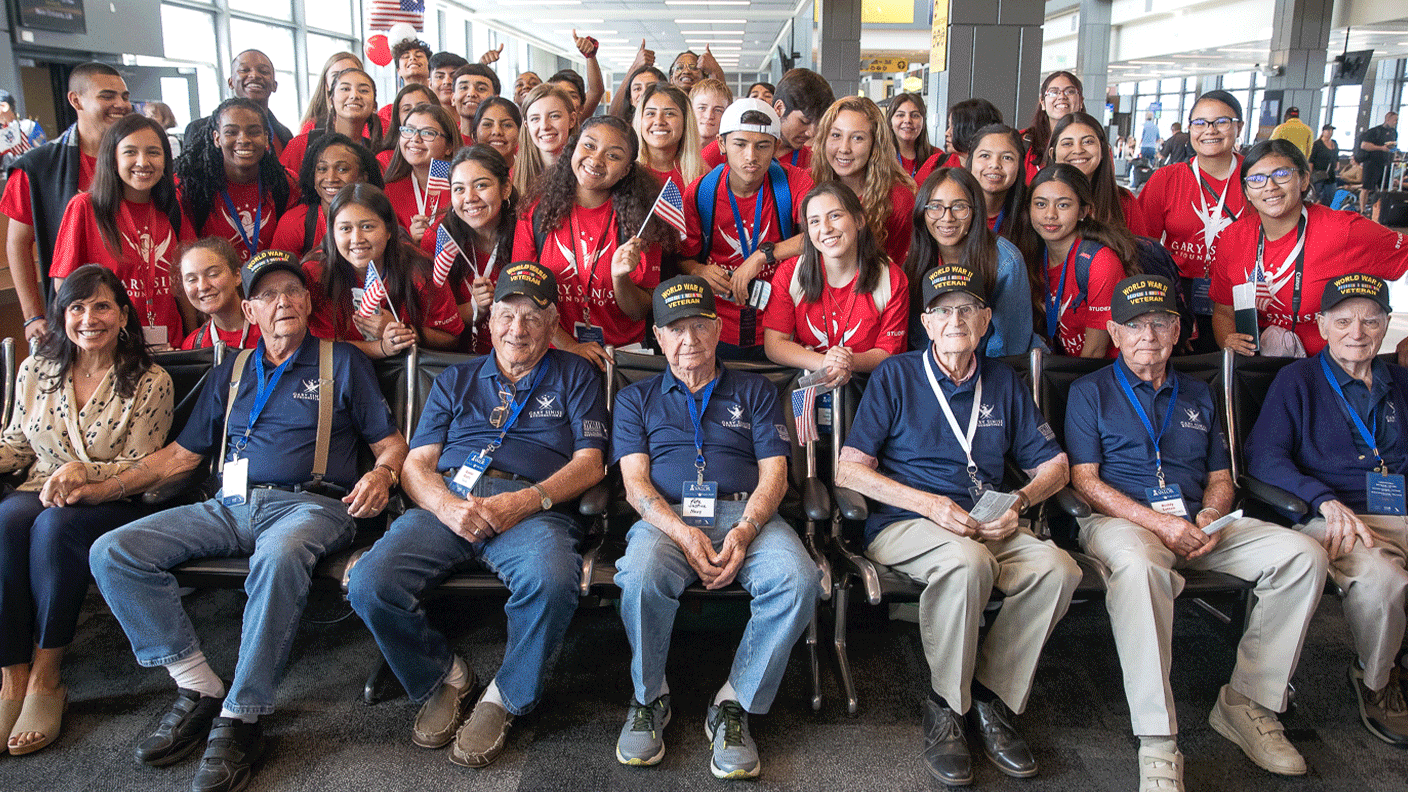
On the grounds of the National WWII Museum in New Orleans, just outside the main entrance to the Louisiana Memorial Pavilion in Founders Plaza, there lies a nondescript bench with a statue of President Franklin Delano Roosevelt cast in bronze.
He sits relaxed with his left leg crossed over the right and looks towards the horizon with contemplation in his eyes.
Alongside the 32nd President, a quote taken from a speech he gave to the White House Correspondents’ Association on February 12, 1943, reads:
We have faith that future generations will know here, in the middle of the twentieth century, there came a time when men of good will found a way to unite, and produce, and fight to destroy the forces of ignorance, and intolerance, and slavery, and war.
During the final week of September, the 17th trip of Soaring Valor brought together 34 veterans from the Greatest Generation who came from Austin and Dallas/Fort Worth, Texas with 41 upperclassmen from Del Valle High School in Travis County, Texas.
Shepherded to and from Austin to New Orleans aboard the red, white, and blue of
our partner, American Airlines, the students, more than 75 years their veterans’ junior, embarked on a three-day journey while at the museum that became an intimate retrospective into the experience of each veteran during the Second World War.
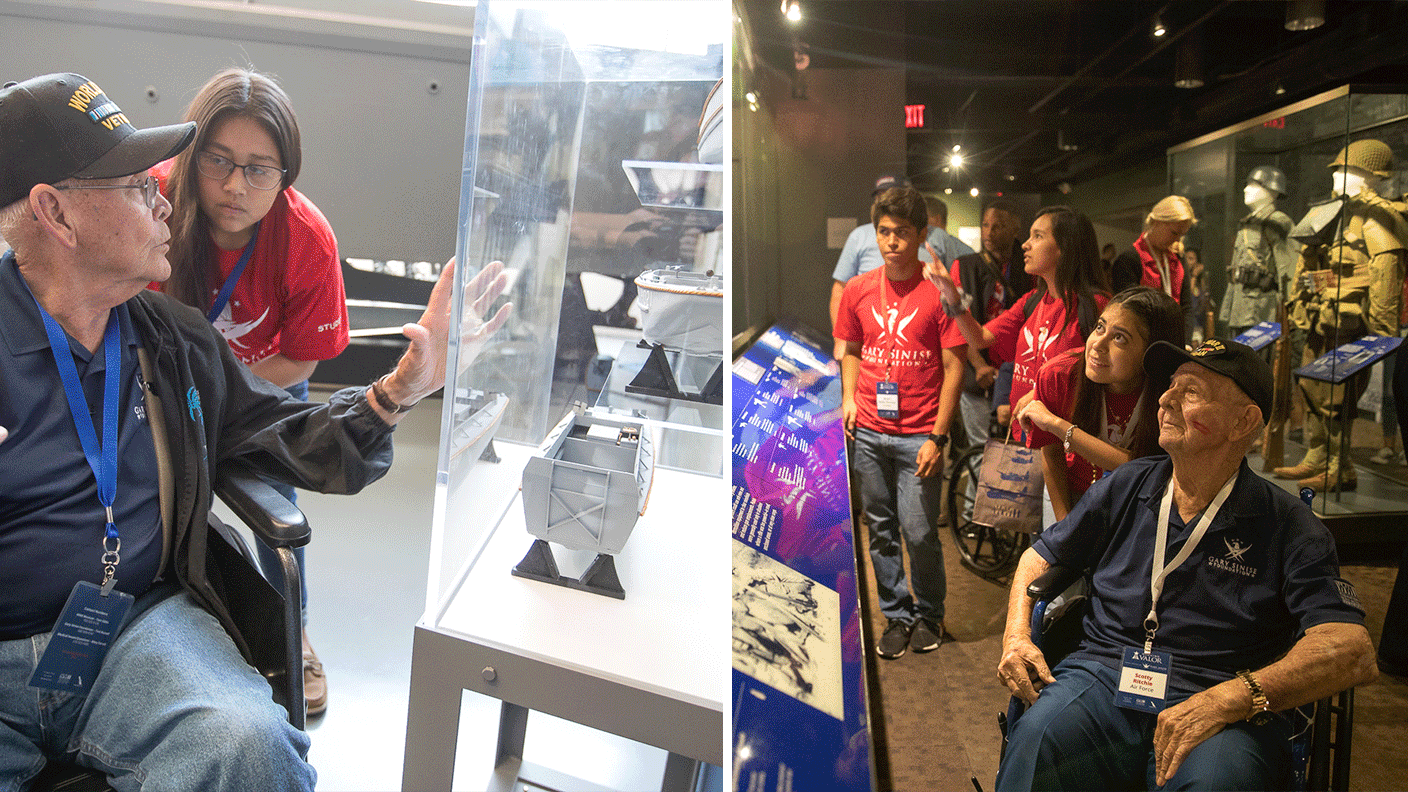
Men and women of the Greatest Generation taking part in Soaring Valor would fulfill President Roosevelt’s hope by passing on to the next generation their historic record of service at a time when the nation and world desperately needed it.
They served stateside and overseas in every branch of the Armed Forces but the Coast Guard, and in combat zones and out of combat zones.
They were aboard ships plying the Pacific and Atlantic Oceans and the seas of the Adriatic and Mediterranean.
They flew aboard bomber and fighter aircraft in the skies above Nazi-occupied Europe and over craggy islands and dense jungles that dot the South Pacific. And some would serve at nursing stations in California and aircraft repair hangars in New York.
For many veterans, the surprise attack on Pearl Harbor by Japanese Naval forces galvanized them to seek out the nearest recruiter from the Armed Forces and enlist to fight against the Axis powers of Imperial Japan, Nazi Germany and Fascist Italy.
“I was listening to the radio waiting for my folks to come out of church when I heard an announcement about the bombing of Pearl Harbor. It affected all of our lives,” said Lyle Bird, who after enlisting in the Navy when he was just 17 spent two years as a signalman from 1943-45 aboard the U.S.S. Okanogan (APA-220), an attack transport ship.
When Bird, now 93, served on the U.S.S. Okanogan, the ship participated in the invasion of Okinawa, survived Kamikaze attacks and several typhoons while sailing through the South Pacific. It was also among the first ships to bring in occupational forces to mainland Japan.
Growing up during the Great Depression, these citizens turned soldiers taking part in Soaring Valor were plucked into military service from dusty little country towns and bustling cities across the country from Texas and California to Oklahoma and Ohio.
Some left their studies at university while others left jobs as a musician, aircraft mechanic and recreational pilot to join the war effort.
For the students selected to partake in the three-day trip, they first received nominations from their counselors, teachers, athletics coaches and club leaders including band and Junior Reserve Officers’ Training Corps (JROTC).
Their outstanding grades and good academic standing, having already learned about WWII history, equipped students with the proper foundation and a curious outlook to make the most of the experience at the museum alongside their assigned veteran.
Throughout Soaring Valor, periodic waves of emotion overcame veterans — and even the students — whose memory of their wartime experience was remembered with easy smiles, heartfelt tears, shared laughter, and unmended sadness.
As the lights came on inside the Solomon Victory Theater at the end of the film, Beyond All Boundaries, which covers the spectrum of WWII in 4-D and features the voice of Gary Sinise as war correspondent Ernie Pyle, Navy veteran Buddy Sutton had tears streaming down his cheeks.
After several pauses to collect himself and dab his eyes with a handkerchief, Sutton, who was finishing up boot camp at the tail end of the war, remarked, "They say war is hell. I lost buddies in Europe."
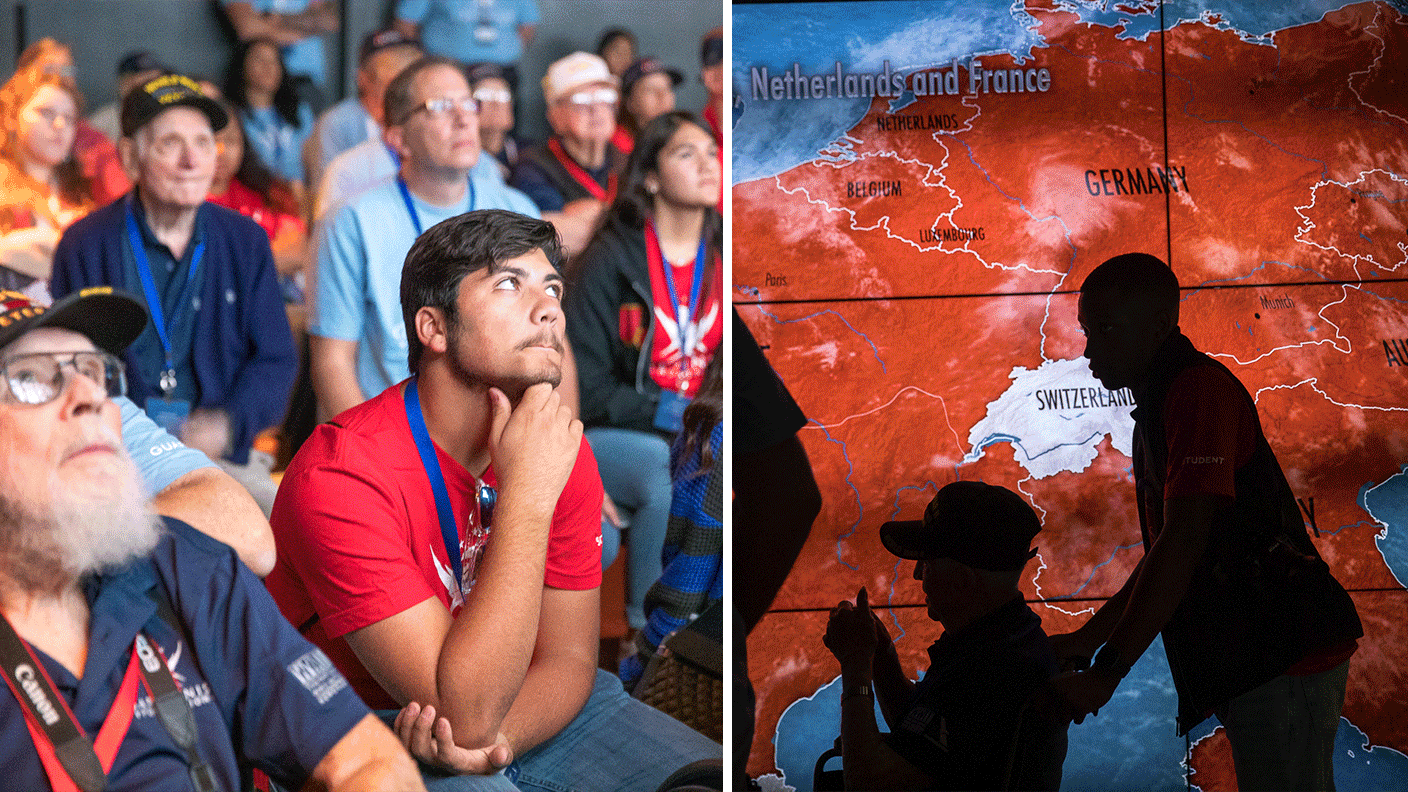
The film also struck a chord with the students.
“The video made me emotional and empathetic,” said Amira Elhaloui, a junior who participates in the school’s JROTC program and who plans on one day becoming a pilot.
Fittingly, she was paired up with Jack Douglas, a veteran of the Army Air Corps and Air Force, who flew in WWII and Korea as a fighter pilot.
It wasn’t just the students who were captivated by veterans’ stories and taken by its emotion but bystanders too, including Laurie and Doug Cowper who were visiting New Orleans and the museum for the first time from their native Windsor, Canada.
The harrowing experience of Stuart “Stu” Hedley brought them to tears.
As he commanded the room from the comfort of his wheelchair, Hedley, an exuberant 98-year-old and one of the few remaining Pearl Harbor survivors, poignantly recounted the crescendo of bomb and torpedo blasts and bullets that whizzed by his ship and those docked nearby as Japan inflicted a devastating strike on the Navy’s Pacific Fleet on December 7, 1941.
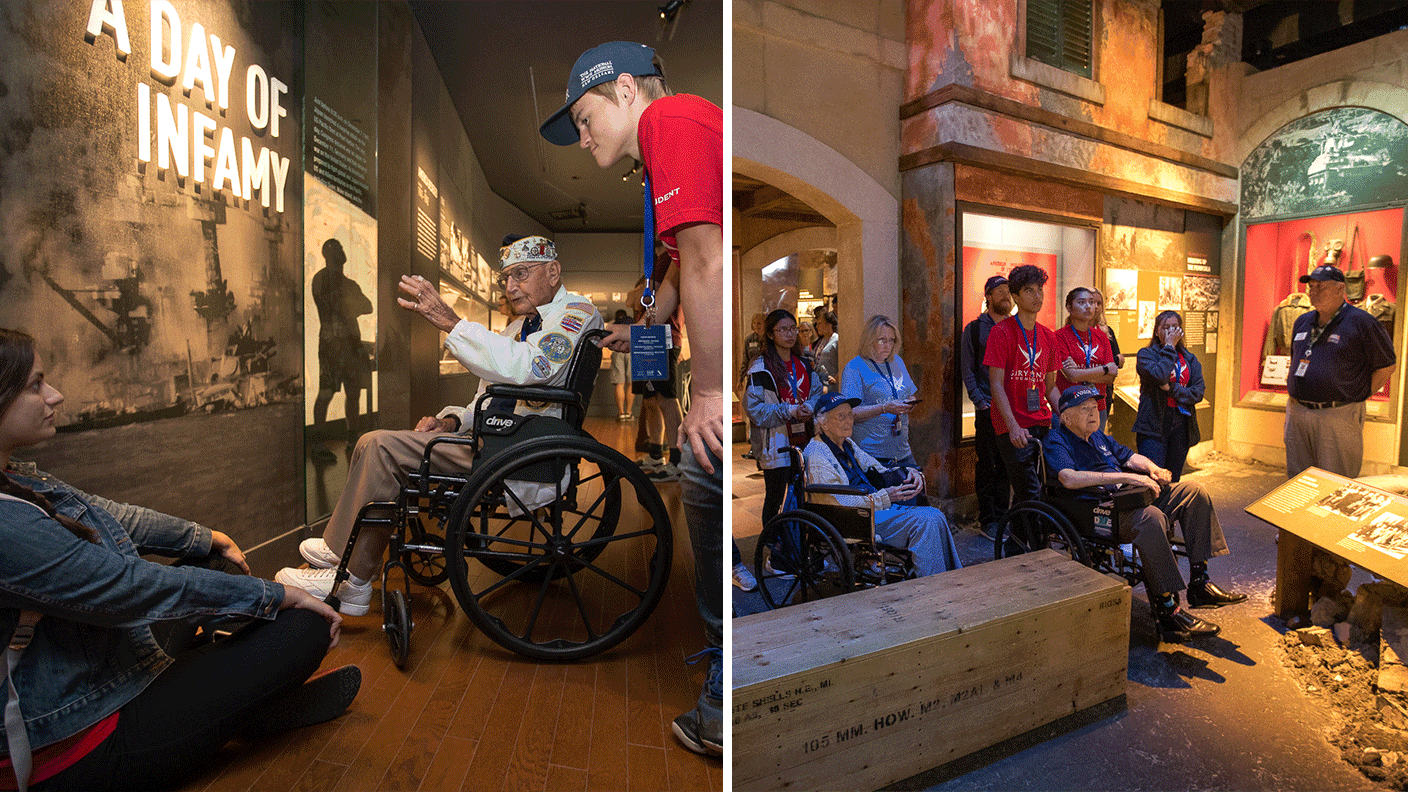
From his duty station as a turret gunner aboard the U.S.S. West Virginia, Hedley spoke of the death and carnage that played out before him and how he and his buddy were able to swim to shore after jumping into oil-slick water that was ablaze, all while Japanese aircraft continued to strafe and bomb the ships at bay and men in the water and on the decks of their ships.
Standing nearby Hedley was Laurie Cowper who, like many others in the room, were caught up in the story.
She wept softly as Hedley spoke, taken by the significance of his experience and how Hedley’s oration, to her surprise, brought back the memory of her uncle who served in Italy with the Canadian Army during the war.
While moving between the Road to Berlin exhibit and Road to Tokyo exhibit, two holocaust survivors were on hand to speak with students and veterans about their wartime experience as Jews living in Nazi-controlled Belgium and Poland, respectively.
For some students, the women's terrifying story of survival, including at the Warsaw Ghetto, elicited both tears and admiration for their courage and resilience in the face of potential capture and even death.
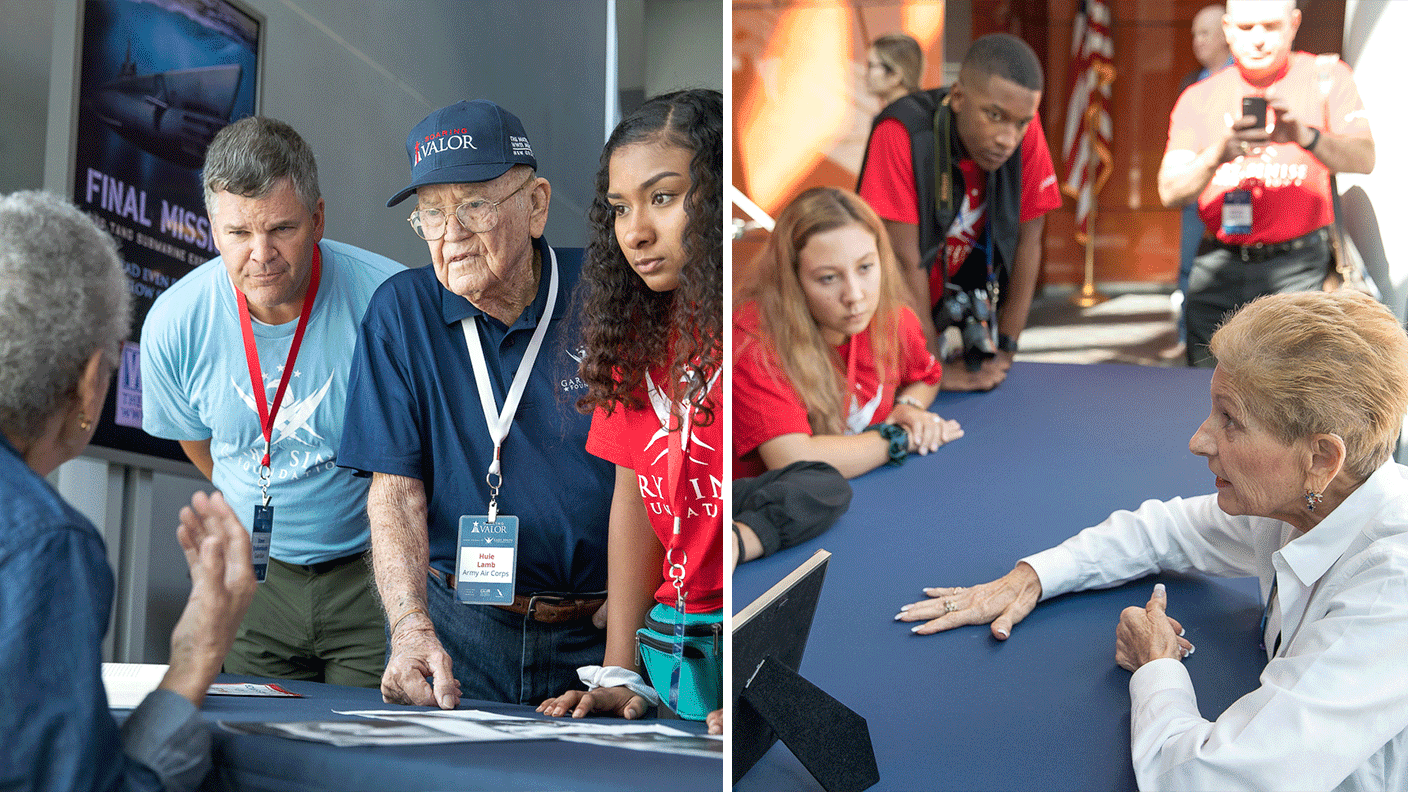
“Hearing what they went through it’s very heartbreaking,” said Jayda Price. “It inspires me that, for somebody to go through something like that that I can accomplish anything in life.”
Price, a junior, learned about the Holocaust in her freshmen year and read the book, Night, written by Elie Wiesel who survived Nazi concentration camps at Auschwitz and Buchenwald.
“Coming here and having a first-hand experience of hearing somebody who actually experienced that gives me more insight into the holocaust.”
She was paired with Jack Maroney, a Fleet Marine who was aboard the most decorated ship of the Second World War, the aircraft carrier U.S.S. Enterprise.
During the carrier’s storied campaign throughout the South Pacific, Maroney served as a 20mm gunner who was involved in 12 naval engagements during his two years while in the Marine Corps including the Gilbert and Marshall Islands to Tarawa, Saipan and the Philippines.
“When you read from a textbook you only get that bit of information but when you actually get to delve deeper into all that is WWII you get a much more full picture,” said Jaden Brachman, a senior who is in the school’s band and who comes from a family that has served in the Armed Forces.
Brachman was partnered with Buster Bostic who served in the Navy on board the U.S.S. Columbia which was deployed to the South Pacific during the war.
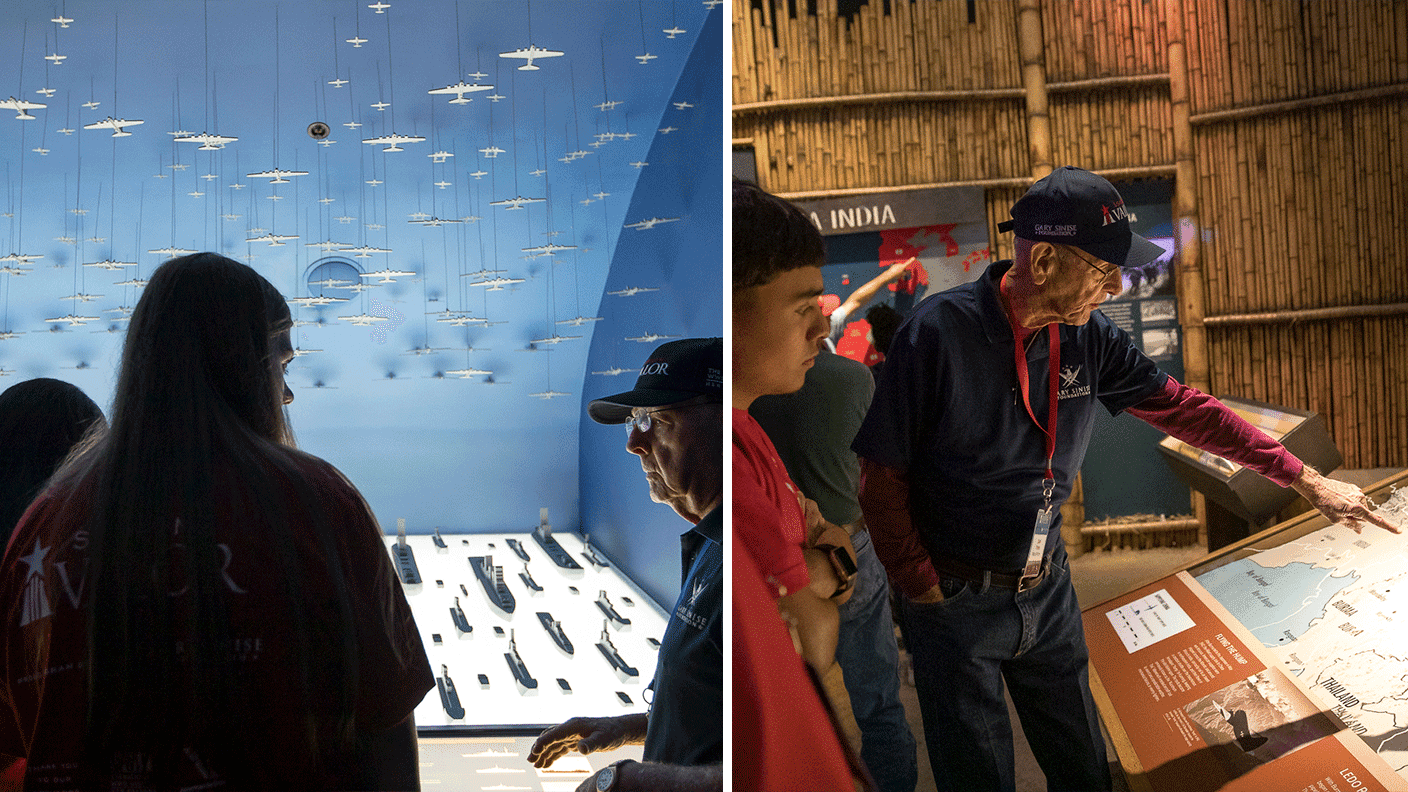
The mission of the National WWII Museum, explains Peter Crean, Vice President of Education & Access, which at its heart is an educational institution, is to honor and tell the stories of veterans who participated in the Second World War with generations to come.
“These Soaring Valor trips go directly to the heart of what that mission is.”
But there is an even greater significance to the generational partnership between high school students and veterans taking part in Soaring Valor, explains Crean.
"By the time they're 20, 25, 30 years old, most of these guys are going to be gone and they’ll be able to say, ‘you know when I was a kid I got to meet a Pearl Harbor survivor or I got to go through the museum with a Fleet Marine.’ That’s a treasure that isn’t going to be afforded to people.”
For the 41 Del Valle High School students who have been entrusted with veterans’ stories of their wartime experience, they move forward in their lives carrying a tremendous obligation to share those stories with others.
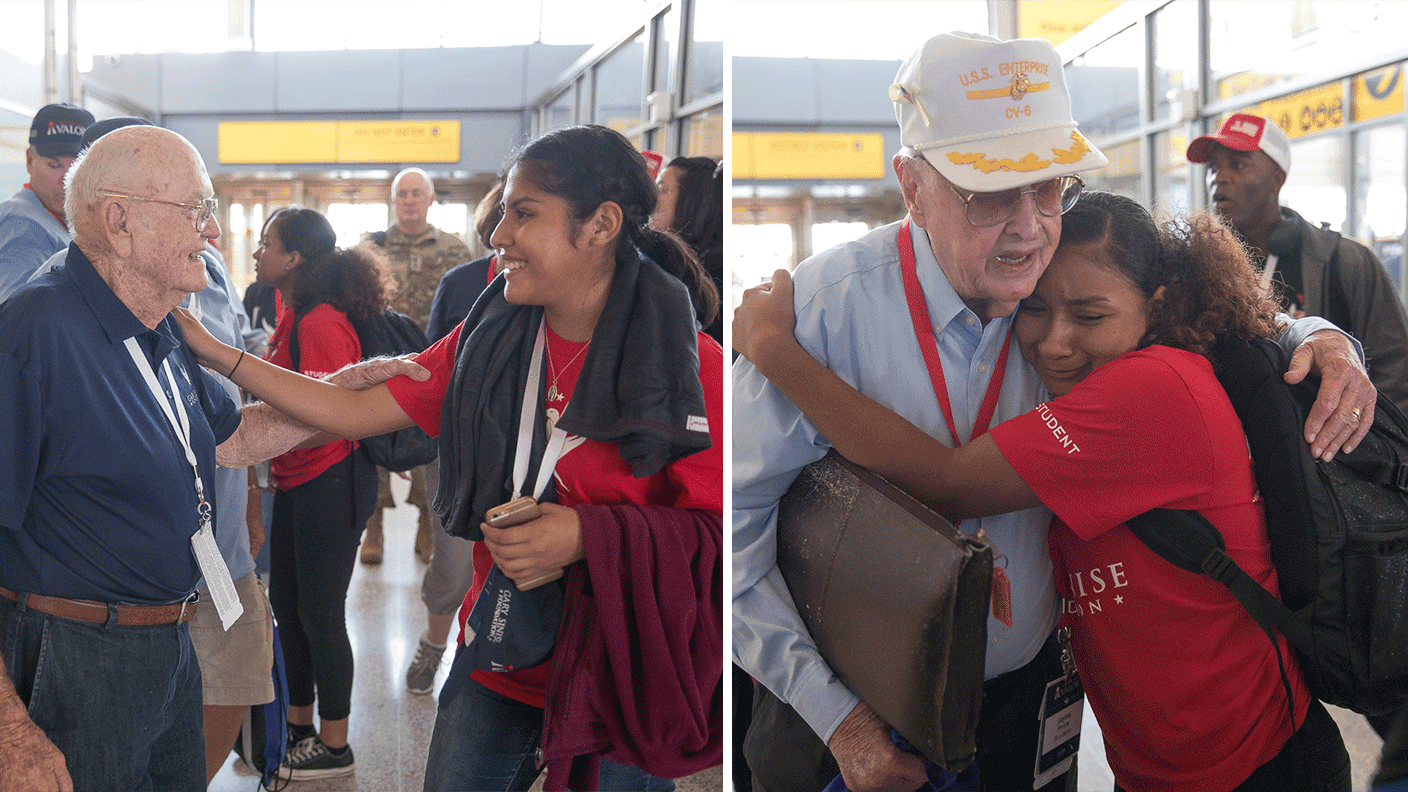
Like high school students from past, present, and future Soaring Valor trips, they will do so by summoning the memory of their veteran whose service during a pivotal moment in the middle of the twentieth century left an enduring legacy that will faithfully live on in their lives and generations that follow.

